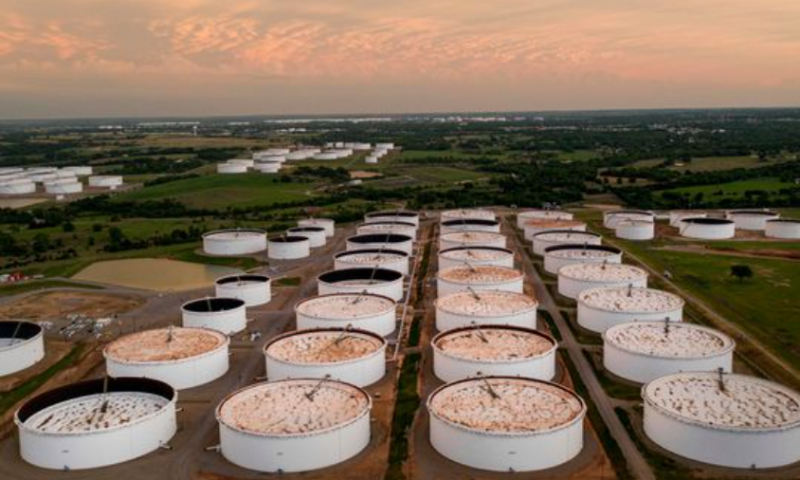Crude heads for big quarterly gains
Oil futures remain in positive territory, but off session highs, after government data showed another drop in U.S. crude inventories as traders await this week’s decision by OPEC+ on output.
West Texas Intermediate crude for August delivery CL00, 0.78% CLQ21, 0.78% was up 25 cents, or 0.3%, at $73.23 a barrel on the New York Mercantile Exchange, after spiking to a session high at $74.14 after the Energy Information Administration said U.S. crude inventories fell by 6.7 million barrels in the week ended June 25.
“The EIA has reported a sixth consecutive draw to crude inventories, as the usual suspects — refinery runs and crude exports — both showed strength,” said Matt Smith, director of commodity research at ClipperData. “A rebound in refinery runs and ongoing robust exports were no match as both production and imports were reported to have ticked lower.”
The EIA said gasoline inventories rose by 1.5 million barrels last week, while supplies of distillates fell by 900,000 barrels. Analysts surveyed by S&P Global Platts had looked for crude stocks, on average, to fall by 4.7 million barrels, while gasoline supplies were seen down by 700,000 barrels; distillate stocks had been expected to rise by 100,000 barrels.
The American Petroleum Institute, an industry trade group, reported Tuesday afternoon that U.S. crude-oil inventories fell by 8.15 million barrels last week, according to a source who cited the data. API also saw gasoline inventories rise by 2.42 million barrels, while distillate supplies were up 428,000 barrels, the source said.
WTI, the U.S. benchmark, was on track for a 23.7% quarterly rise and a gain of more than 50% in the year to date.
September Brent crude BRN00, 0.67% BRNU21, 0.66%, the global benchmark, was up 14 cents, or 0.2%, at $74.42 a barrel on ICE Futures Europe. Brent was up more than 21% for the quarter and 46% over the first half, based on most actively traded contracts. August Brent crude BRNQ21, 0.52% was up 29 cents, or 0.4%, at $75.05 a barrel.
The OPEC+ decision remains the main event of the week. A meeting of the body’s Joint Ministerial Monitoring Committee, or JMMC, was postponed by a day to Thursday, news reports said, in a move that means three meetings — OPEC ministers, the JMMC and then OPEC+ ministers — will take place on Thursday.
The JMMC delay was aimed at giving parties more time to reach a compromise, with Russia considering a proposal to hike production, while Saudi Arabia would prefer a more gradual approach, Bloomberg reported.
“We would not overinterpret this as dissent,” said Eugen Weinberg, commodity analyst at Commerzbank, in a note.
“It is rather the case that OPEC+ currently has the luxury of being able to control events on the oil market in the medium term, partly because the reaction of countries outside the producers’ alliance has been fairly disappointing,” he said.
In particular the restrained response to rising oil prices by the U.S. shale oil industry, which is now showing economic and financial discipline and following a “sustainable growth” approach rather than the “growth at any cost” principle, has allowed OPEC to serve as the marginal producer, with control over prices, Weinberg said.
Meanwhile, August gasoline RB00, 0.51% RBQ21, 0.52% turned lower after the EIA data, down 0.2% at $2.2363 a gallon, while August heating oil HO00, 0.76% HOQ21, 0.76% was off 0.2% at $2.1198 a gallon.
August natural-gas futures NG00, 0.80% NGQ21, 0.80% edged down 0.5% to $3.613 per million British thermal units, after closing Tuesday at the highest level for a front-month contract since December 2018, as hot temperatures grip the western U.S.

